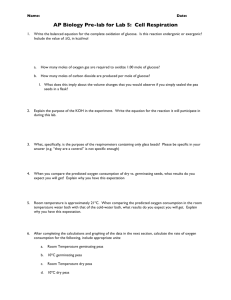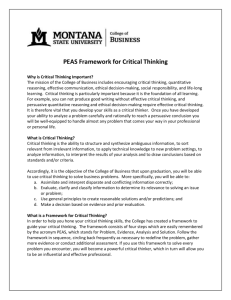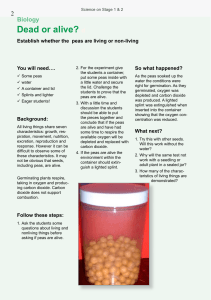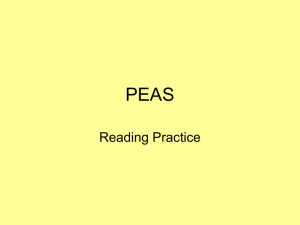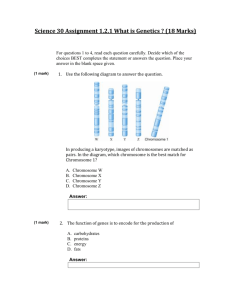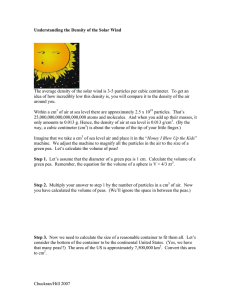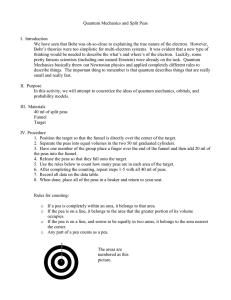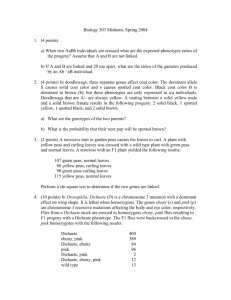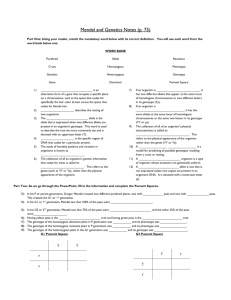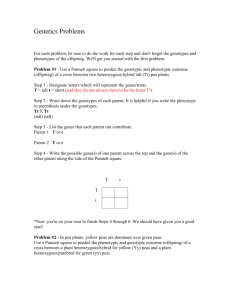Biology 303 Midterm, Fall 2007
advertisement
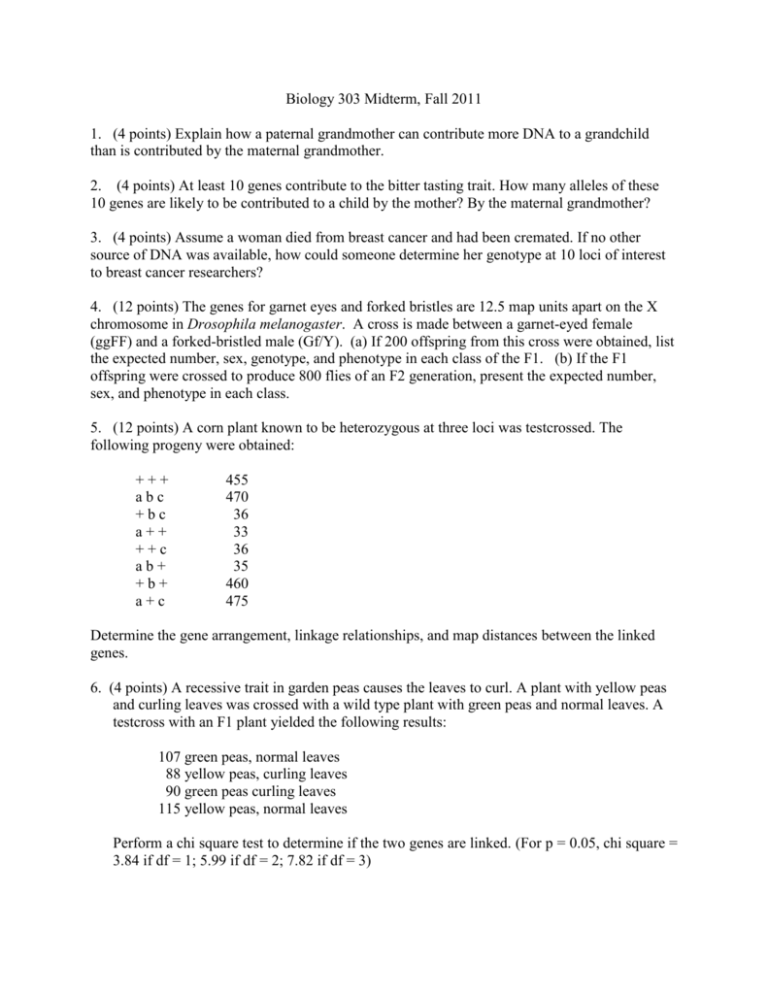
Biology 303 Midterm, Fall 2011 1. (4 points) Explain how a paternal grandmother can contribute more DNA to a grandchild than is contributed by the maternal grandmother. 2. (4 points) At least 10 genes contribute to the bitter tasting trait. How many alleles of these 10 genes are likely to be contributed to a child by the mother? By the maternal grandmother? 3. (4 points) Assume a woman died from breast cancer and had been cremated. If no other source of DNA was available, how could someone determine her genotype at 10 loci of interest to breast cancer researchers? 4. (12 points) The genes for garnet eyes and forked bristles are 12.5 map units apart on the X chromosome in Drosophila melanogaster. A cross is made between a garnet-eyed female (ggFF) and a forked-bristled male (Gf/Y). (a) If 200 offspring from this cross were obtained, list the expected number, sex, genotype, and phenotype in each class of the F1. (b) If the F1 offspring were crossed to produce 800 flies of an F2 generation, present the expected number, sex, and phenotype in each class. 5. (12 points) A corn plant known to be heterozygous at three loci was testcrossed. The following progeny were obtained: +++ abc +bc a++ ++c ab+ +b+ a+c 455 470 36 33 36 35 460 475 Determine the gene arrangement, linkage relationships, and map distances between the linked genes. 6. (4 points) A recessive trait in garden peas causes the leaves to curl. A plant with yellow peas and curling leaves was crossed with a wild type plant with green peas and normal leaves. A testcross with an F1 plant yielded the following results: 107 green peas, normal leaves 88 yellow peas, curling leaves 90 green peas curling leaves 115 yellow peas, normal leaves Perform a chi square test to determine if the two genes are linked. (For p = 0.05, chi square = 3.84 if df = 1; 5.99 if df = 2; 7.82 if df = 3)
